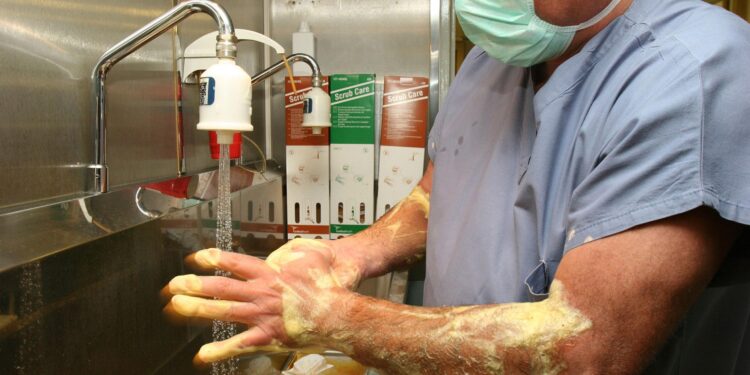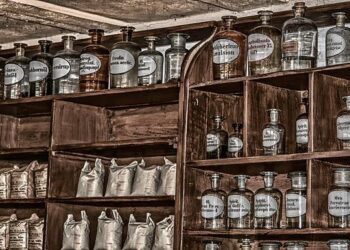Revolutionary Findings on Hospital Superbugs and Medical Plastics
A recent pioneering study has the potential to transform our comprehension of hygiene practices in hospitals and infection prevention. Researchers have identified a troubling new trait of a well-known hospital superbug: its ability to consume medical-grade plastics that are widely utilized in healthcare environments. This unprecedented research, highlighted by Live Science, raises critical concerns regarding how medical institutions manage infection risks, especially amid the ongoing crisis of antibiotic resistance. As healthcare professionals strive to uphold sterile conditions, this discovery emphasizes the urgent need for innovative strategies to address the evolving challenges posed by superbugs.
The Relationship Between Medical Plastics and Superbug Resilience
New findings indicate that specific strains of hospital superbugs can metabolize medical plastics, which poses significant challenges for infection control within healthcare facilities. These resilient microorganisms are often responsible for severe infections acquired in clinical settings and have adapted to not just survive but flourish on polymers used in various medical applications. This revelation suggests a possible route for these pathogens to persist within hospitals despite stringent sterilization efforts, complicating initiatives aimed at combating increasing antibiotic resistance.
The ramifications of this research are profound; it calls for a reassessment of materials commonly used in medical devices. As hospitals increasingly depend on plastics due to their durability and flexibility, it is essential to explore methods that can reduce risks associated with plastic-loving superbugs. Potential actions include:
- Creating biodegradable alternatives that do not promote microbial growth.
- Improving sterilization techniques specifically designed to target these resilient bacteria.
- Establishing comprehensive monitoring systems for tracking infection rates linked with plastic usage.
This alarming news compels the healthcare sector to seek innovative solutions both in material science and clinical practices aimed at ensuring patient safety as we confront an era where superbugs remain a persistent threat. Further investigations are necessary to elucidate how these pathogens metabolize plastics and identify strategies for curbing their spread.
Deciphering Superbug Adaptation Mechanisms Related to Synthetic Materials
The groundbreaking study reveals an unsettling capability among certain hospital superbugs: they can break down components found within medical plastics. This adaptation underscores an urgent need for deeper understanding regarding how these pathogens evolve when exposed to synthetic environments. Researchers found that these bacteria employ enzymes capable of degrading polyvinyl chloride (PVC) along with other polymers—potentially providing them with an unconventional nutrient source. The implications are significant; it indicates our medical materials might inadvertently support the survival and expansion of antibiotic-resistant organisms.
To gain insight into this adaptation process, scientists are examining genetic modifications enabling plastic biodegradation among these microbes. Preliminary results suggest several contributing factors:
- Genetic mutations: Specific changes allow bacteria to produce enzymes effective at digesting plastic materials.
- Selective environmental pressures: The unique conditions present in hospitals may favor such mutations as they encourage bacteria’s resource exploitation capabilities.
- Crossover gene transfer: These resilient microbes can share genetic information across different strains, spreading their ability to digest plastic more widely.
This research highlights remarkable resilience among hospital-associated superbugs while raising critical questions about future infection control measures and material utilization within healthcare settings. Understanding these adaptive mechanisms is vital as we work towards combating antibiotic resistance effectively while managing risks tied with synthetic environments.
Approaches To Reduce Risks from Plastic-Metabolizing Superbugs Within Healthcare Environments
Tackling the emerging threat posed by superbugs capable of metabolizing medical plastics requires healthcare facilities adopt a comprehensive risk management strategy. Primarily, enhancinginfection control protocols is crucial—emphasizing thorough cleaning procedures alongside sterilization processes across all equipment used medically is essential . Establishing strict disposal guidelines concerning single-use plastics will help prevent environmental contamination leading back into bacterial proliferation cycles . Implementing robust audit systems will enable tracking usage patterns related specifically towards identifying areas where such resistant strains may thrive .
Apart from standard infection control measures , health care providers should consider investing resources intoresearch & development of alternative materials less prone towards microbial colonization . Collaborations between clinicians & material scientists could yield breakthroughs involving biodegradable or non-plastic substitutes maintaining necessary functionality required during treatment applications . Additionally , organizingtraining sessions & workshops for staff members would raise awareness surrounding dangers linked directly back towards improper handling/disposal practices associated primarily around waste generated through use cases involving traditional forms made out entirely from petroleum-based sources like polyethylene terephthalate (PET). Cultivating vigilance throughout organizational culture remains paramount when addressing threats stemming from this novel class emerging amongst pathogenic organisms targeting human health outcomes directly impacting public welfare overall!
Conclusion: The Path Ahead
The revelations brought forth by this groundbreaking study necessitate immediate reevaluation concerning existing standards governing both material selection alongside established protocols guiding best practice implementations surrounding infectious disease management frameworks currently employed throughout various sectors operating under umbrella terms classified broadly under “healthcare.” Discoveries indicating certain types belonging specifically categorized under “hospital-acquired” infections now possess capabilities allowing them access nutrients derived solely via consumption behaviors exhibited toward common items typically regarded safe highlight new dimensions added complexity faced daily practitioners working tirelessly combat rising tide seen globally against antimicrobial agents losing efficacy rapidly over time due largely misuse/overuse scenarios witnessed historically across multiple disciplines involved treating patients suffering ailments requiring intervention urgently! Ongoing exploration remains vital if we hope fully grasp implications stemming forth resulting phenomena observed here today whilst developing actionable interventions tailored meet needs arising amidst ever-changing landscape characterized unpredictability inherent nature biological systems interacting dynamically one another continuously evolving ways previously unimagined before now!













![[News] Japan Develops 10nm Nanoimprint Technology, with Potential to Tackle EUV Bottleneck – TrendForce](https://earth-news.info/wp-content/uploads/2025/12/329851-news-japan-develops-10nm-nanoimprint-technology-with-potential-to-tackle-euv-bottleneck-trendforce-360x180.jpg)














![[News] Japan Develops 10nm Nanoimprint Technology, with Potential to Tackle EUV Bottleneck – TrendForce](https://earth-news.info/wp-content/uploads/2025/12/329851-news-japan-develops-10nm-nanoimprint-technology-with-potential-to-tackle-euv-bottleneck-trendforce-120x86.jpg)

